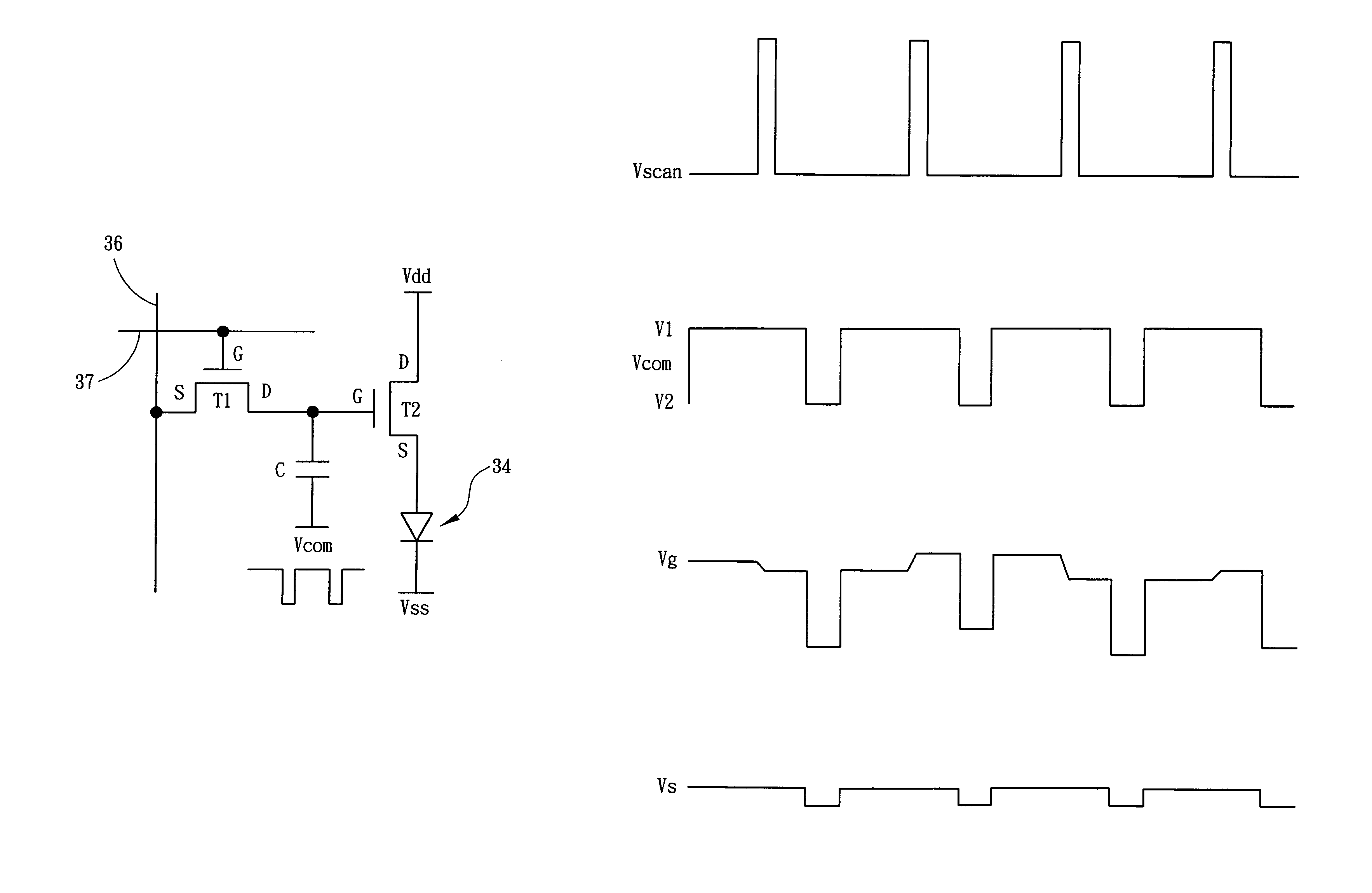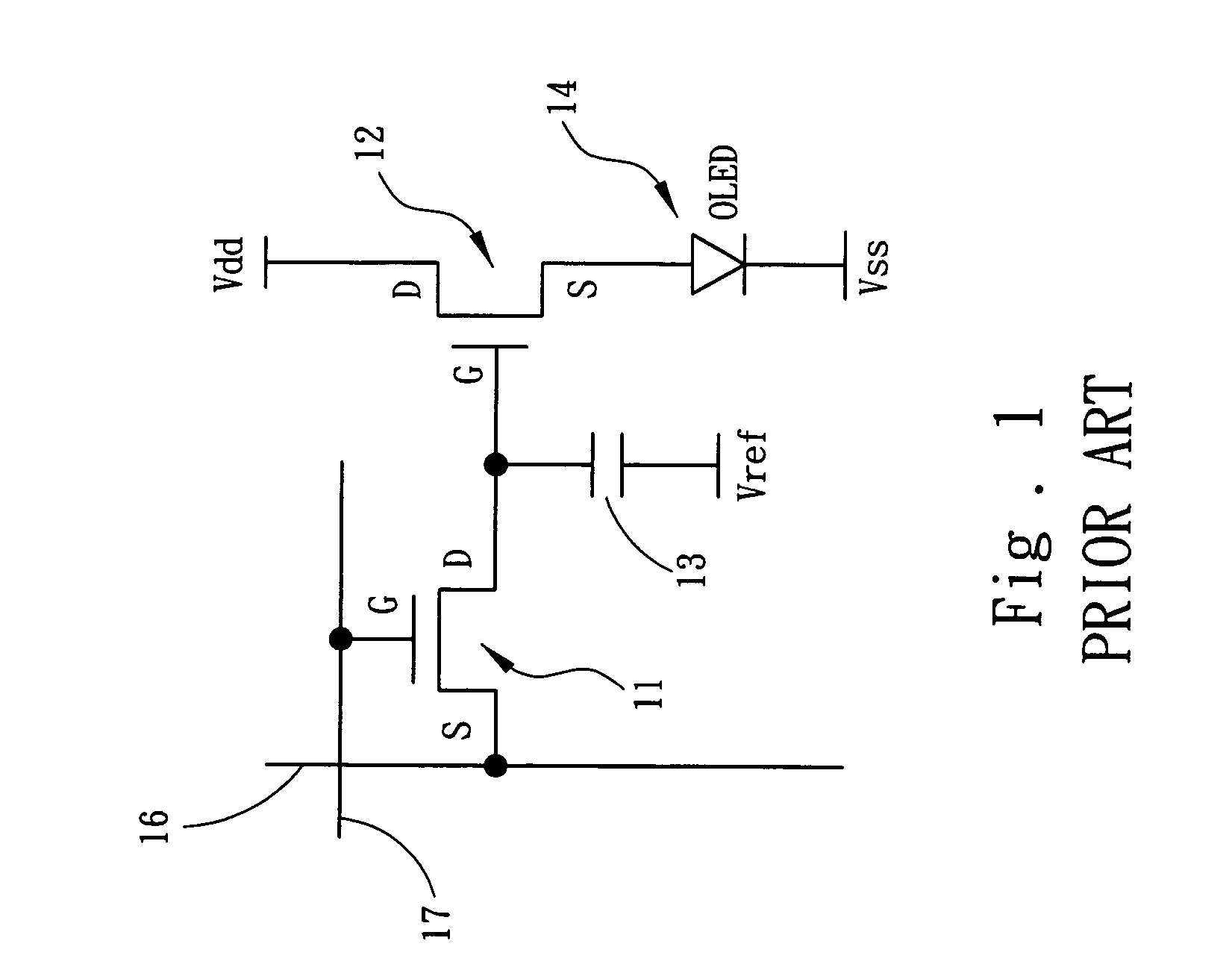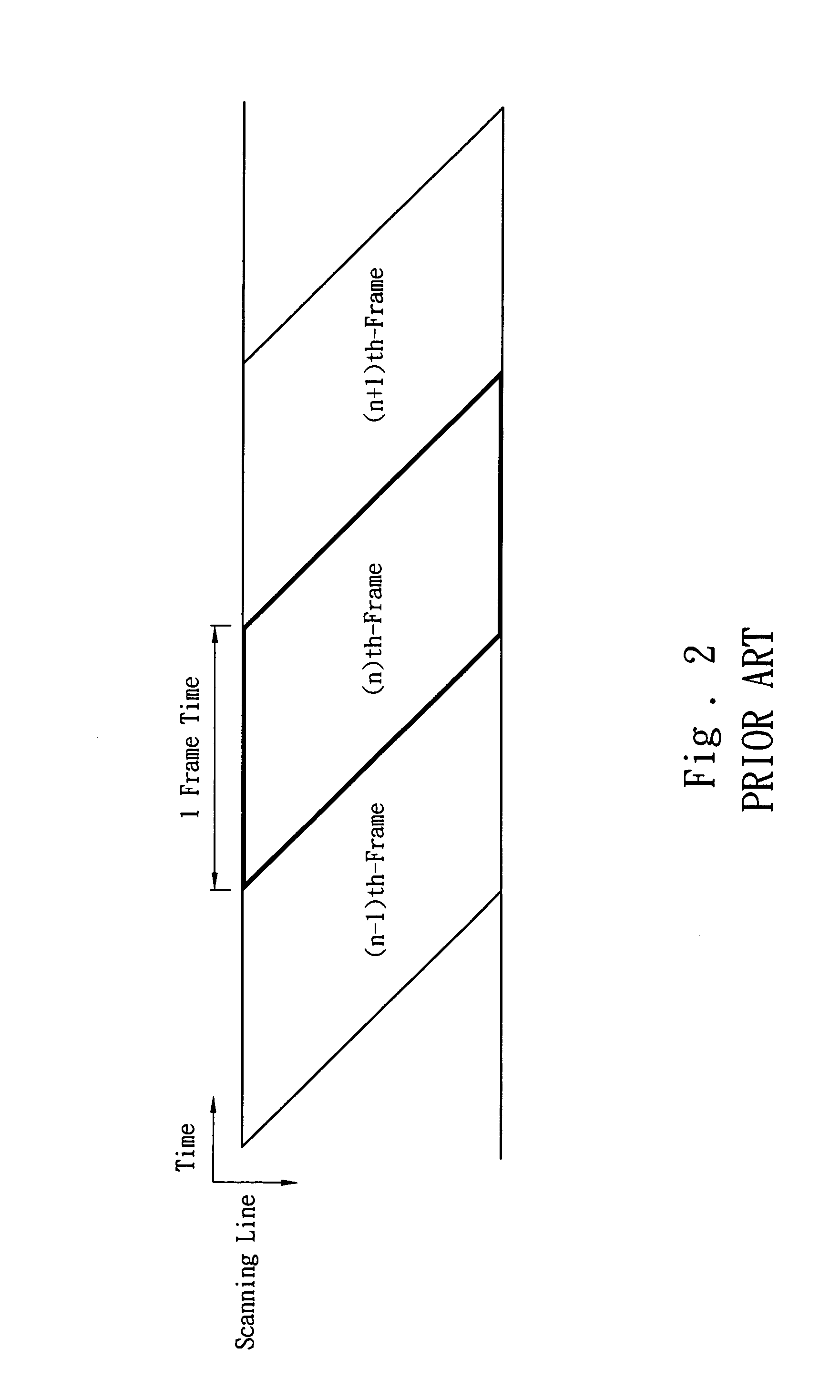Method of improving the stability of active matrix OLED displays driven by amorphous silicon thin-film transistors
a technology of amorphous silicon thin-film transistors and active matrix displays, which is applied in the direction of instruments, light sources, computing, etc., can solve the problems of inability to achieve long term stability of a-si tft driving devices on transistors, inability to achieve long term and inability to achieve the effect of long-term stability of a-si tft driving devices on transistors /
- Summary
- Abstract
- Description
- Claims
- Application Information
AI Technical Summary
Benefits of technology
Problems solved by technology
Method used
Image
Examples
Embodiment Construction
[0030]The driving circuitry for each sub-pixel in this invention and the schematic diagram of the connection as well as control of each sub-pixel on display panel are shown in FIGS. 6 and 7. As shown in the figures, each data line 36 and each scan line 37 on the display device form a matrix of m×n sub-pixels on the display panel. The driving circuitry for each sub-pixel includes two TFT and a capacitance. The organic light emitting diode (OLED) 34 is driven by a driving transistor T2, the drain (D) of which is connected to the power source Vdd, and the source (S) to the anode of the organic light emitting diode 34. The cathode of the organic light emitting diode 34 is connected to a comparatively fixed low potential Vss (for example to the ground as zero potential). Besides, the gate (G) of a scanning transistor is connected to scan line 37, the source (S) is connected to data line 36, and the drain (D) to the gate (G) of driving transistor T2 and one end of storage capacitance. In ...
PUM
 Login to View More
Login to View More Abstract
Description
Claims
Application Information
 Login to View More
Login to View More - R&D
- Intellectual Property
- Life Sciences
- Materials
- Tech Scout
- Unparalleled Data Quality
- Higher Quality Content
- 60% Fewer Hallucinations
Browse by: Latest US Patents, China's latest patents, Technical Efficacy Thesaurus, Application Domain, Technology Topic, Popular Technical Reports.
© 2025 PatSnap. All rights reserved.Legal|Privacy policy|Modern Slavery Act Transparency Statement|Sitemap|About US| Contact US: help@patsnap.com



